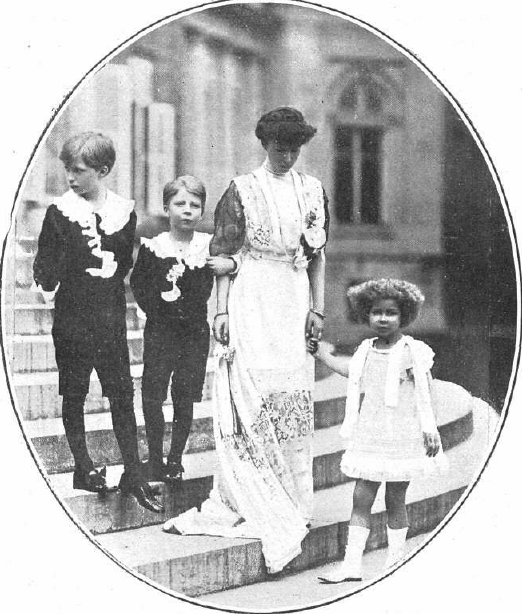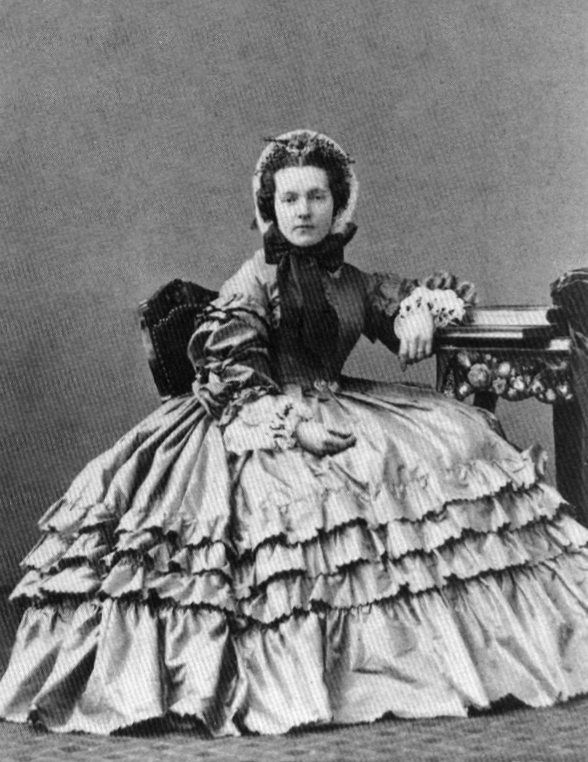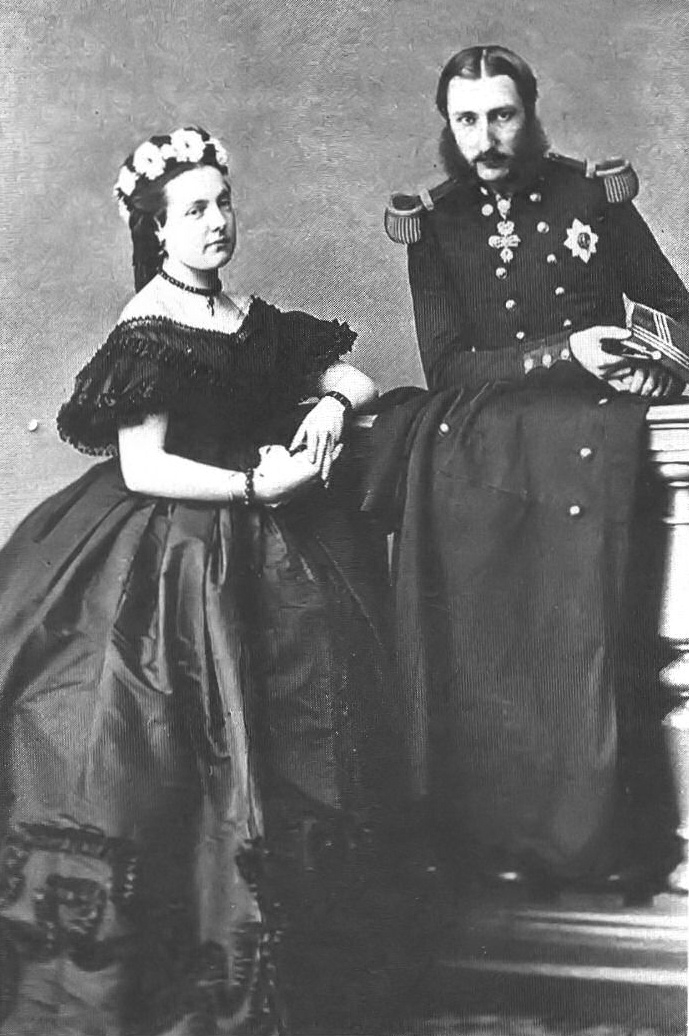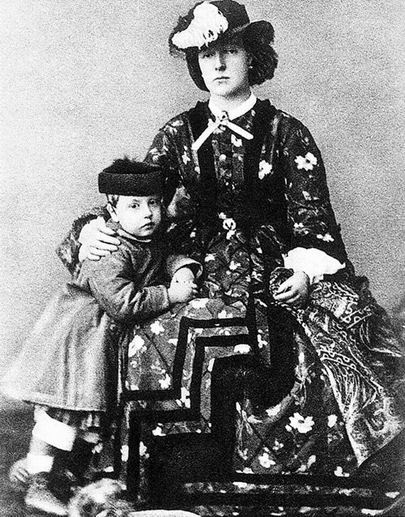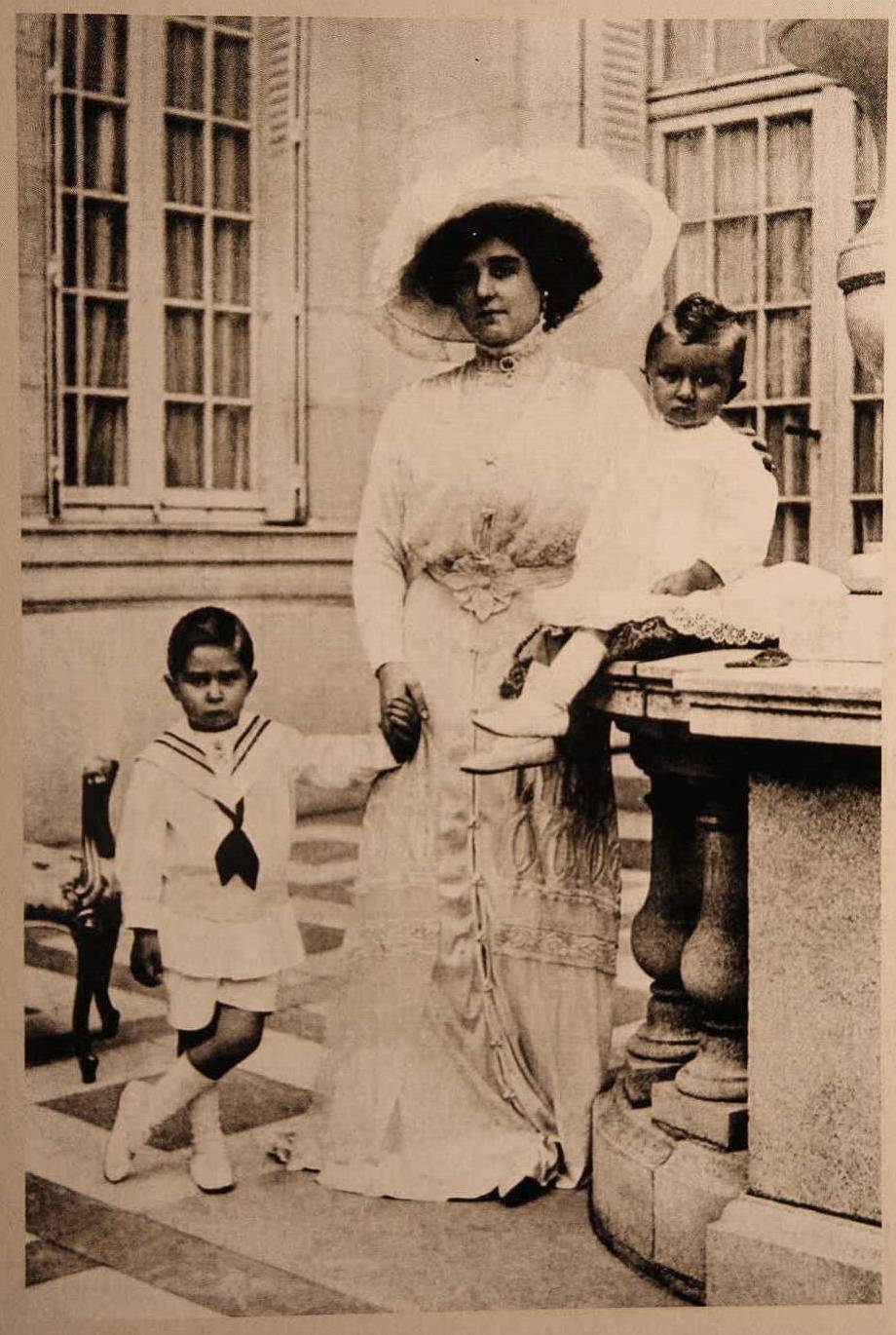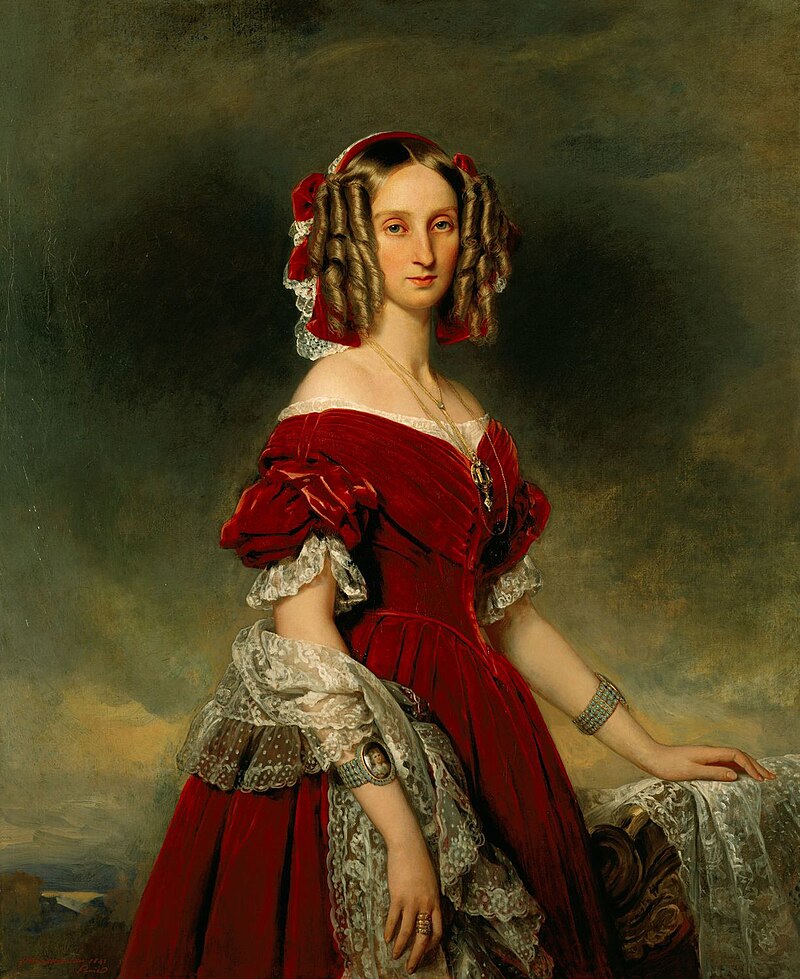by Emily McMahon © Unofficial Royalty 2017

Photo Credit – http://orderofsplendor.blogspot.com
Hereditary Grand Duke Jean of Luxembourg (the future Grand Duke Jean of Luxembourg) married Princess Joséphine-Charlotte of Belgium on April 9, 1953, in a civil ceremony in the Hall of Ceremonies at the Grand Ducal Palace in Luxembourg City, Luxembourg and then a religious ceremony was held at the Cathedral of Notre Dame also in Luxembourg City, Luxembourg.
Jean’s Early Life
Embed from Getty Images
Jean was the eldest child of Charlotte, Grand Duchess of Luxembourg, and her consort Felix of Bourbon-Parma. The heir apparent of the Luxembourgish grand ducal throne from birth, Jean was born at Berg Castle on January 5, 1921. He began using the title of Hereditary Grand Duke of Luxembourg after his eighteenth birthday in 1939.
Jean was educated in Luxembourg through his early years, continuing at Ampleforth College in the United Kingdom. After fleeing Europe with his family at the outbreak of World War II, Jean continued his studies at the French-speaking Laval University in Quebec City, Quebec, Canada. Jean joined several of his Imperial cousins as a student at the university, rooming for a short time with Archdukes Carl Ludwig and Rudolph of Bourbon-Parma.
Jean left Laval by choice, opting to join the British Army in the Irish Guards in 1942. Serving under the name “John Luxembourg,” Jean eventually rose through the ranks to captain. He continued with his military training at the Royal Military College of Sandhurst. Jean landed in Normandy a few days after the June 1944 invasion. He later fought in the Battle of Caen, a campaign intended to strengthen the Allied position in France as well as to cut off German mobility within the northern part of the country.
With his father, Jean took an active role in the liberation of Brussels and later his home country of Luxembourg in September 1944, riding into Luxembourg City in one of General George S. Patton’s tanks. Jean then continued fighting with Allied troops in Germany through the end of the war.
The prince earned numerous military decorations during his service, including French, Belgian, and Luxembourg Croix de Guerre, a Dutch Commemorative War Cross, and an American Silver Star. Following the war, Jean was named a Colonel of the Luxembourg Army.
Several decades after the end of World War II, Jean was recognized for his British military service by Queen Elizabeth II, who named him a Colonel of the Irish Guards and later an Honorary General of the British Army.
After the war, Jean returned to service in representing the interests of Luxembourg within Europe and overseas. He served as a member of the International Olympics Committee from the close of World War II until the 1990s.
An athletic young man, Jean practiced fencing, tennis, swimming, and skiing, later patronizing several Luxembourgish organizations devoted to sports. Like his Belgian father-in-law, Jean also had a keen interest in the environment, particularly in the preservation of native vegetation and animal life. Jean also developed an interest in the American West, spending considerable time in Arizona and Wyoming.
Joséphine-Charlotte’s Early Life
Embed from Getty Images
Joséphine-Charlotte with her two brothers, the future King Albert II and the future King Baudouin
Joséphine-Charlotte was baptized a month after her birth at the Royal Palace in Brussels. Ironically, the baby’s godmother was her future mother-in-law, Charlotte, Grand Duchess of Luxembourg. Joséphine-Charlotte’s godfather was her uncle Charles, Count of Flanders. The baby’s Belgian and Swedish grandparents were also in attendance.
As agreed before the marriage of Lutheran Astrid and Catholic Leopold, Joséphine-Charlotte was raised with her father’s faith. (Astrid later converted to Catholicism a few years after her daughter’s birth.) Joséphine-Charlotte had a happy early childhood with her younger brothers Baudouin and Albert. She was affectionately called “Little Jo” within her family. Like her parents, Joséphine-Charlotte enjoyed the outdoors throughout her life, spending her free time fishing, hunting, or gardening.
Joséphine-Charlotte lost her mother in 1935 following a car accident in Switzerland. The Belgian public extended their enormous sympathies to the grieving family, with great concern given to the effects it had on Joséphine-Charlotte and her brothers. By all accounts, Leopold remained a devoted father to his children and kept close ties with his late wife’s family. Many photographs exist from this time of children with their Swedish grandparents and Norwegian cousins.
Leopold married a second time in 1941 to Lilian Baels, later known as Lilian, Princess of Réthy. Although the marriage was initially kept from the Belgian public and was later very unpopular, Joséphine-Charlotte had a close relationship with her stepmother before her marriage.
Joséphine-Charlotte was educated privately in Belgium until the outbreak of World War II, after which Joséphine-Charlotte and her family were held under house arrest in Belgium, Germany, and finally Austria. The conditions were harsh in captivity, where the Belgian royals lived with very little food and were under constant threat of execution by the Nazis.
After the war, Leopold was accused of collaborating with the Nazis and prevented from returning to Belgium. Joséphine-Charlotte and her family temporarily settled in Prégny, Switzerland. Joséphine-Charlotte studied child psychology in nearby Geneva; one of her professors was the well-known developmental psychologist Jean Piaget.
Joséphine-Charlotte was eventually allowed to return to Belgium in 1949. She spent this time working toward the restoration of her father as King of the Belgians. The following year Joséphine-Charlotte voted in the referendum held to decide Leopold’s fate as king or commoner. Joséphine-Charlotte was prevented from leaving her plane for 45 minutes as the airport was mobbed with her father’s supporters. Although Leopold briefly returned to Belgium as king, he abdicated to Baudouin the following year after a violent strike in Wallonia.
Engagement
Embed from Getty Images
Rumors of a Belgian-Luxembourg engagement began appearing in the press in November 1952. While Joséphine-Charlotte and Jean were indeed officially engaged the previous month, the engagement was not made official to the public until December 26, 1952. The April 9, 1953 wedding date was announced the following day. A ball was held in Brussels to celebrate the event.
Speculation began early on that the match had been arranged for political reasons. The promoters of the union were believed to be Dowager Queen Elisabeth and Grand Duchess Charlotte. The press seemed to conclude somewhat harshly that if the pairing was indeed arranged, the marriage would, therefore, be unhappy and loveless. At various times both Jean and Joséphine-Charlotte were said to have fallen in love and wanted to marry commoners but were prevented from doing so by their disapproving families.
Still, other news reports portrayed Jean and Joséphine-Charlotte as long-time sweethearts, as a surprising love match that bloomed after a lifetime of casual friendship, or as each other’s best options in a limited royal dating pool. Whatever the background of their engagement, Jean and Joséphine-Charlotte gave the impression of a happy couple during their engagement.
Wedding Preparations
Embed from Getty Images
St. Michael and St. Gudula’s Cathedral in Brussels, Belgium was discussed early on as the probable location for the ceremony. The Cathedral of Notre Dame in Luxembourg City was eventually secured for the religious wedding.
Seats in stands along the wedding parade route sold for $4 while standing tickets went for half the price. With 70,000 visitors from Belgium and elsewhere expected for the wedding festivities, hotels in Luxembourg were booked months before the event. This prompted the government to call upon Luxembourgish citizens to open their homes to guests.
The Belgian government offered troops to guard the royal guests. The Luxembourgers politely declined, insisting that their own troops, police force, and firefighters could adequately ensure the safety of the visitors.
Postponement of the wedding was briefly considered following the death of Queen Mary, grandmother of Queen Elizabeth II of the United Kingdom, on March 24, 1953. Although preparations went ahead as planned, Princess Margaret (the intended British representative) did not attend. Geoffrey C. Allchin, the British ambassador to Luxembourg, attended the wedding in place of Princess Margaret.
The mass influx of visitors into the tiny country was called by one newspaper as “Luxembourg’s greatest-ever peaceful invasion,” making a somewhat morbid reference to Luxembourg’s frequent military occupations.
A set of six stamps featuring a picture of the new couple and the Luxembourg coat of arms was released by the government of Luxembourg to commemorate the big event.
Joséphine-Charlotte’s Arrival in Luxembourg
Joséphine-Charlotte left Brussels amid great fanfare on April 7, 1953. Around 70,000 Belgians showed up at the Royal Palace to bid their princess goodbye and good luck before her wedding.
She traveled with her father, stepmother, and siblings from Belgium to Luxembourg by train, arriving on the afternoon of April 7. Upon their arrival in Luxembourg City, Joséphine-Charlotte stepped out smiling, dressed in a mauve velvet dress and hat.
Several thousand people had gone to the train station to watch the couple make their entrance. Jean met the royal train at the Belgian-Luxembourgish border. After welcoming his fiancée with a kiss, he joined her on the train into the city. Jean escorted Joséphine-Charlotte along a red carpet to a limousine.
King Baudouin later realized that he had forgotten to pack his sword for the ceremony. A courier was hurriedly dispatched back to Belgium, retrieving the sword just in time for the wedding.
Wedding Ceremonies
Embed from Getty Images
On April 9, 1953, as required by law in Luxembourg, Jean and Joséphine-Charlotte were first married in a civil ceremony. The civil wedding was held in the Hall of Ceremonies in the Grand Ducal Palace in the morning prior to the religious wedding. The mayor of the city of Luxembourg, Emile Hamilius, served as officiate. The parents of both couples ceremonially handed consent documents to Mr. Hamilius prior to the event.
Jean and Joséphine-Charlotte traveled by open carriage along the two-mile route to the cathedral, despite light rain falling that morning. Asked by her fiancé if she minded getting wet on the way to the wedding, Joséphine-Charlotte said with a smile that she did not.
The wedding was one of the first major royal events in Europe following the devastation of World War II. The décor and happy nature of the event matched the public’s enthusiasm for a little fun following a very rough preceding decade.
A crowd of 100,000-140,000 (far more than the projected 70,000) packed the damp streets to watch the couple’s journey to the Cathedral of Notre Dame, 100,000 of which were said to be visitors from Belgium. The street lamps along the parade route were decorated with flowers and flags of both Luxembourg and Belgium. Spectators demonstrated respect toward one another by refusing to hold umbrellas in the rain so as not to block anyone else’s view of the events.
The recently abdicated King Leopold III of Belgium, the bride’s father, and Grand Duchess Charlotte, the groom’s mother, led Joséphine-Charlotte and Jean to the altar respectively. Alexandre of Belgium, Joséphine-Charlotte’s younger half-brother and godson, carried her train. The couple had no additional attendants.
The joint Belgian and Luxembourgish Papal Nuncio Msgr Fernando Cento officiated in a golden miter and cape, giving the wedding an additional touch of majesty. During the ceremony, the couple knelt on silk cushions surrounded by white carnations and candles.
The nave of the church was covered in banners of red, white, and blue along with red, yellow, and black for the couple’s respective countries. In addition, the hall was decked in a sumptuous cream fabric.
Wedding Attire
Embed from Getty Images
Jean wore an olive green uniform indicating his status as a colonel of the Luxembourg Army. Like many royal grooms, Jean wore several of his many orders, including the Order of the Gold Lion of House of Nassau, the Order of Leopold, and several of his military medals from service during World War II.
Joséphine-Charlotte wore a dress of white organza (silk), with a high neckline, a ruffled collar, and billowing sleeves with similarly ruffled cuffs. The two layers of the dress were separated by white tulle. The dress featured a long train of (of course!) Bruges lace. The sleeves and body of the dress featured numerous covered buttons.
Joséphine-Charlotte’s fourteen-foot-long train was made of handmade needlepoint and pillow lace, with flowers on an organza backing. Her tulle veil featured handmade Belgian lace attached to a diamond-encrusted platinum diadem. She also wore matching handmade lace gloves gathered at the wrists and carried a bouquet of stephanotis trimmed with tulle.
Joséphine-Charlotte wore two different tiaras during the festivities – the Congo Diamond Necklace Tiara was worn during the ceremony, while the Belgian Scroll Tiara was worn during most of the official wedding pictures.
Royal Pains
News of tension among the Belgian royals later emerged, evidently centering around Princess Liliane’s right of precedence. While it was customary for newly married royal couples to be followed down the aisle by their respective parents, the Dowager Queen Elizabeth took the place beside Prince Felix of her deceased daughter-in-law Astrid; Liliane was placed eighth.
The precedence issue was noted to be a problem as early as February 1953. Liliane, in her first official appearance since her own marriage to Leopold, was reportedly insistent upon taking the place of the bride’s mother, but in the end, she lost out to Elizabeth. The discomfort among the Belgian royals was evident on their faces in wedding photographs.
Elizabeth was angered enough by the incident to opt out of traveling with the family from Belgium to Luxembourg by train, deciding instead to make the trip by car. Josephine-Charlotte’s apparent shakiness, distraught behavior, and eventual collapse during the ceremony were said to be the result of the fight over precedence. An “unofficial” source said that the ceremony was almost delayed by Joséphine-Charlotte’s apparent distress over the fight.
The bride was said to have appeared pale and nervous during the processional. She initially stood on the wrong side at the altar (to Jean’s right), causing both sets of families to switch sides of the church. Concerned over his bride’s behavior, Jean was reported to have repeatedly asked her if she was all right during the religious ceremony. Joséphine-Charlotte confused the order of responses to her vows, began crying, and eventually collapsed at either the end of or shortly after the ceremony. During the recessional, the still-upset bride stepped on her train three times in an effort to avoid some overeager wedding guests crowding the couple.
For her part, Liliane was observed as having “rose to her feet rather early” after Jean and Joséphine-Charlotte passed her during recessional and may have attempted to take Elizabeth’s designated place on Felix’s arm.
Back to the Palace
Jean and Joséphine-Charlotte exited the cathedral to the street via a tunnel of swords raised by Luxembourg military officers.
The new couple rode back to the palace in heavier rain via an open Chrysler convertible. Joséphine-Charlotte was said to appear somewhat revived and was smiling during the ride. Grand Duchess Charlotte and ex-King Leopold followed behind Jean and Joséphine-Charlotte in an open Cadillac convertible. Baudouin escorted his grandmother Ingeborg of Sweden in a third car. Other European royalty followed in a series of additional cars behind the family.
Thirty-two Belgian Air Force jets flew through the air during the motor recessional amid a 101-gun salute to the newly married couple. The Belgian naval band played for the couple and crowds during the parade, their instruments protected against the rain by waterproof covers.
A reception attended by 750 guests followed at the palace. The reception hall had been altered to accommodate additional guests by the removal of a stone wall that originally separated the hall into two rooms.
Both the bride and groom were smiling as they appeared on the balcony of the Grand Ducal Palace. The two waved to a very excited, noisy, and wet crowd below. Due to the constant cheering below, the couple appeared multiple times on the balcony to wave to the well-wishers.
Joséphine-Charlotte’s Jewels
Both of the tiaras Joséphine-Charlotte wore as a part of the wedding celebrations were gifts. The Congo Diamond Necklace Tiara (aptly named as it could be worn in either fashion) was designed by Van Cleef & Arpels and given to the bride by the people of the Congo.
The second tiara was presented as a gift by the national bank of Belgium, the Société Générale. Now commonly known as the Belgian Scroll Tiara, Joséphine-Charlotte liked the piece very much, wearing it for dozens of events during her marriage.
Joséphine-Charlotte was given several new and heirloom jewels by her family. Leopold gave his daughter a Van Cleef & Arpels earring and brooch set, as well as an emerald and diamond bracelet and tiara set that had originally been given to Queen Astrid.
Wedding Guests
A few weeks before the wedding, Queen Elizabeth II announced that her sister, Princess Margaret, would represent her at the wedding. However, due to the death of Queen Mary on March 24, Margaret did not attend. Geoffrey C. Allchin, the ambassador to Luxembourg, instead represented Britain.
Umberto, the former King of Italy and a brother-in-law of the couple arrived by train from his exile in Portugal. His estranged wife, the former Marie-Jose of Belgium, arrived by car. Juliana of the Netherlands arrived by a plane piloted by her husband Bernhard.
The wedding was attended by 2500 guests, including three kings, three queens, 40 princes and princesses, all from ruling and former houses of European royalty.
Notable guests:
- Queen Juliana and Prince Bernhard of the Netherlands
- Grand Duchess Charlotte of Luxembourg and Prince Felix
- King Baudouin of Belgium
- Umberto and Marie-Jose, former King and Queen of Italy
- Geoffrey C. Allchin, British Ambassador to Luxembourg (the British did not send a royal representative as the country was still in mourning for Queen Mary)
- Prince Carl of Sweden (uncle of Josephine-Charlotte)
- Princess Ingeborg of Sweden
- Crown Prince Olav and Crown Princess Martha of Norway
- Princess Ragnhild of Norway
- Princess Astrid of Norway
- Zita of Bourbon-Parma, former Empress Consort of Austria
- Prince Axel and Princess Ingeborg of Denmark
- Prince George of Denmark
- Prince Charles of Luxembourg
- Perle Mesta, the American ambassador to Luxembourg
- Princess Elisabeth of Luxembourg
- Princess Marie-Gabrielle of Luxembourg
- Prince Antoine and Princess Alix of Ligne
- Princess Marie-Adelaide of Luxembourg
- Princess Maria-Pia of Savoy
- Prince Eberhard of Urach
- Prince Franz Josef II and Princess Georgina of Liechtenstein
- Albert, Count of Liege
- Andre of Bourbon-Parma
- Rene of Bourbon-Parma
- Carlos Hugo of Bourbon-Parma
- Princess Diane of Bourbon-Parma
- Prince Jacques and Princess Bridgette of Bourbon-Parma
- Prince Louis and Princess Maria Francisca of Bourbon-Parma
- Michel of Bourbon-Parma
- Heinrich of Bavaria
Honeymoon
A Mediterranean cruise aboard the Royal Belgian yacht was initially planned as a honeymoon for the new couple. This was delayed and later canceled due to Josephine-Charlotte’s stress over the wedding. Jean and Joséphine-Charlotte spent time relaxing quietly in Luxembourg City.
Jean and Joséphine-Charlotte later toured Africa over a two-month period.
Children

Jean and Joséphine-Charlotte with their children in 1971; Credit – Wikipedia
Jean and Joséphine-Charlotte had five children
This article is the intellectual property of Unofficial Royalty and is NOT TO BE COPIED, EDITED, OR POSTED IN ANY FORM ON ANOTHER WEBSITE under any circumstances. It is permissible to use a link that directs to Unofficial Royalty.














